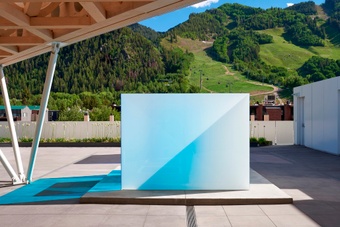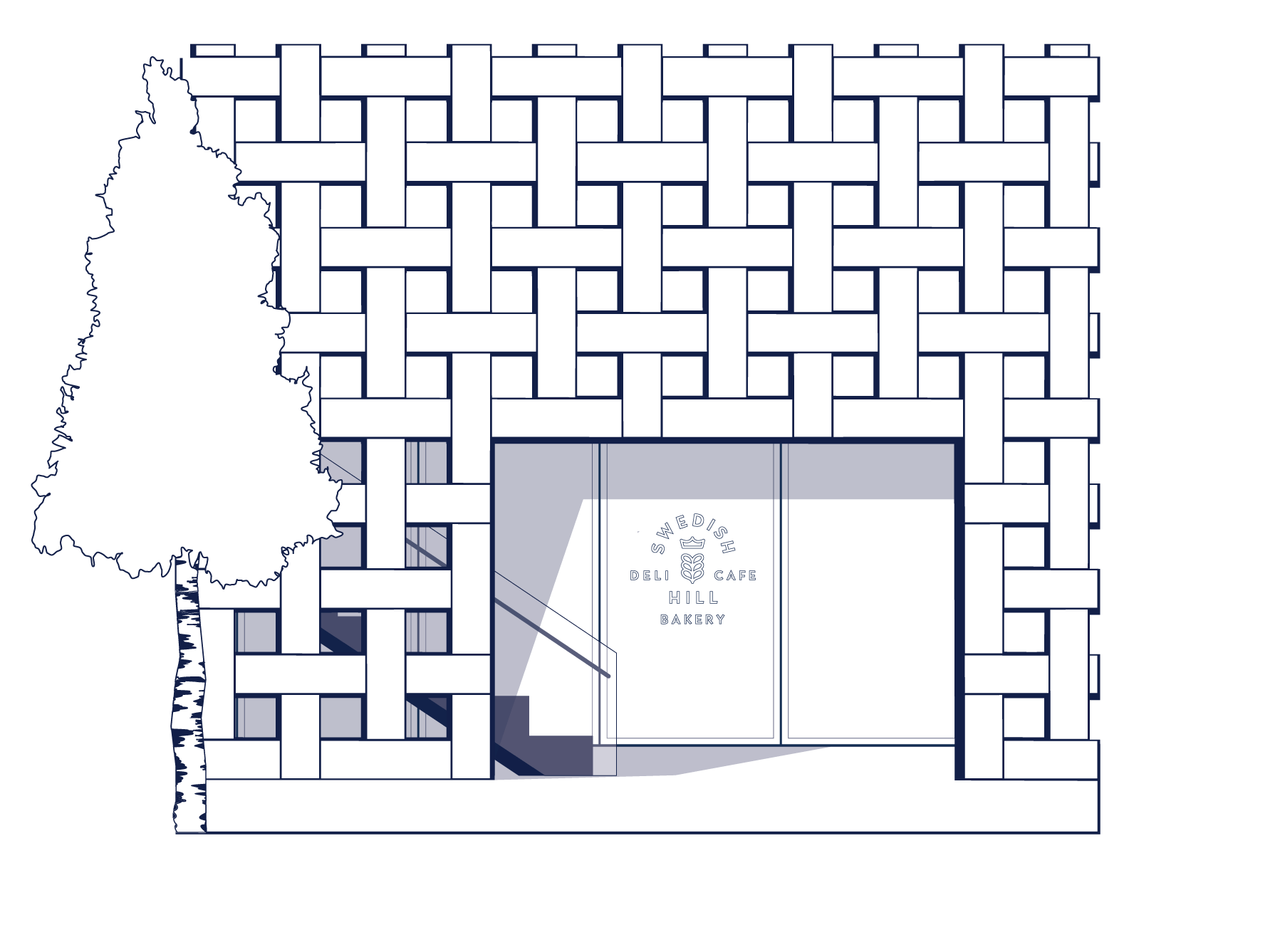Aspen Art Museum
Current Exhibitions
- Categories
- All events
- Talks and Lectures
- Member Events

- For more information on how you can join the AAM, please visit the Street Level Visitor Information Desk, inquire in the Shop, or call 970.925.8050.

- Swedish Hill Aspen is open on our Rooftop from 8AM–3PM

- Aspen Art Museum is an artist-founded institution dedicated to supporting artists in the development of bold ideas to shape our museum and the field of art today.
Alice Channer Open Studio: Negative Space
Related Media
Related Artists
Background
This simple lesson is about the ways in which we look.
When I was a teenager, I had an art teacher called Mr.
Howard. One day, Mr. Howard told me to think about
what he called the “negative space” in the picture I was
making. He didn’t explain what he meant by “negative
space,” and by doing that, he set off a little bomb in my
mind, which is still exploding several decades later. I
realized that there were whole areas of the picture that
I wasn’t really seeing. I also realized that every time I
made a picture or an object, I was also making a hierarchy
in the way the parts were arranged. He changed the way I
looked at, experienced, made, and arranged pictures and
objects, and beyond that, he changed the way I understood
the world.
Questions
When we look, where do we look and how?
What do we choose to see and not see?
Can we learn different ways of looking?
Can we see differently using our peripheral vision?
Practice looking at the edges of an object or a picture, rather than the center. Look around the part of the picture or object that is telling you it is the most important element. Focus instead on the “negative space.”
Find objects that are hollow or have holes. Can you look through or into them? Many objects are not solid, even though they pretend to be, and by looking into them, we are looking with them rather than looking at them. Are there ever holes in pictures?
Exercises
1.
Pictures are composed in
order to make us see in
particular ways, but we can
find ways around this.
Using old magazines and
newspapers, cut out the
pictures. From each image,
cut out what you think
is the central subject or
focus of the picture and
discard it. Focus instead on
the “negative space”—the
background or the periphery.
Tape the part you are left
with to the wall. Carry
on adding these “negative
spaces,” peripheral visions,
and image edges to the
wall until you have made
a vast patchwork pattern
full of holes that include
the wall surface beneath.
2. Our two human eyes are at the top of our tall, vertical bodies, on just one side of our head. This particular position influences the way we look, and what and how we see. Other animals, for example, have eyes that see very differently and from a different perspective. Make drawings imagining that you have the eyes of the animals described below. How would you see and experience differently?
A snake has two eyes at the front at ground level and can see better at night than in the day.
An octopus can see with its skin, and can smell and taste with its arms.
A spider typically has four
pairs of eyes.
3. It is possible to make pictures using holes that describe the space around our bodies.
Using old clothes, cut out the collars, waistbands, and armholes—any of the circular openings where a body might enter and exit the piece of clothing. Pay attention to the details of the cloth and exactly where you are making the cut, these will become important later. What are you choosing to keep, what are you choosing to discard? Using a roller, roll printing ink onto the collars, waistbands, and armholes (any color of ink will work). Place the inky fabric onto a piece of paper on a solid, stable flat surface (any color or texture paper will work). Then place another piece of paper of the same size on top and push down hard on the fabric. Pull the two pieces of paper apart and discard the inked fabric. You have made a picture of a “negative space.” Repeat, playing with the ways in which different fabric parts are arranged on the paper.
free courtesy
Amy & John Phelan
- Aspen Art Museum
- 637 East Hyman Avenue
- Aspen, Colorado 81611
- t: 970.925.8050
- f: 970.925.8054
- info@aspenartmuseum.org
| Hours |
|
Tuesday–Sunday, 10 AM–6 PM
Closed Mondays
|
© 2024 Aspen Art Museum
General operating support is provided by Colorado Creative Industries. CCI and its activities are made possible through an annual appropriation from the Colorado General Assembly and federal funds from the National Endowment for the Arts.



General operating support is provided by Colorado Creative Industries. CCI and its activities are made possible through an annual appropriation from the Colorado General Assembly and federal funds from the National Endowment for the Arts.











